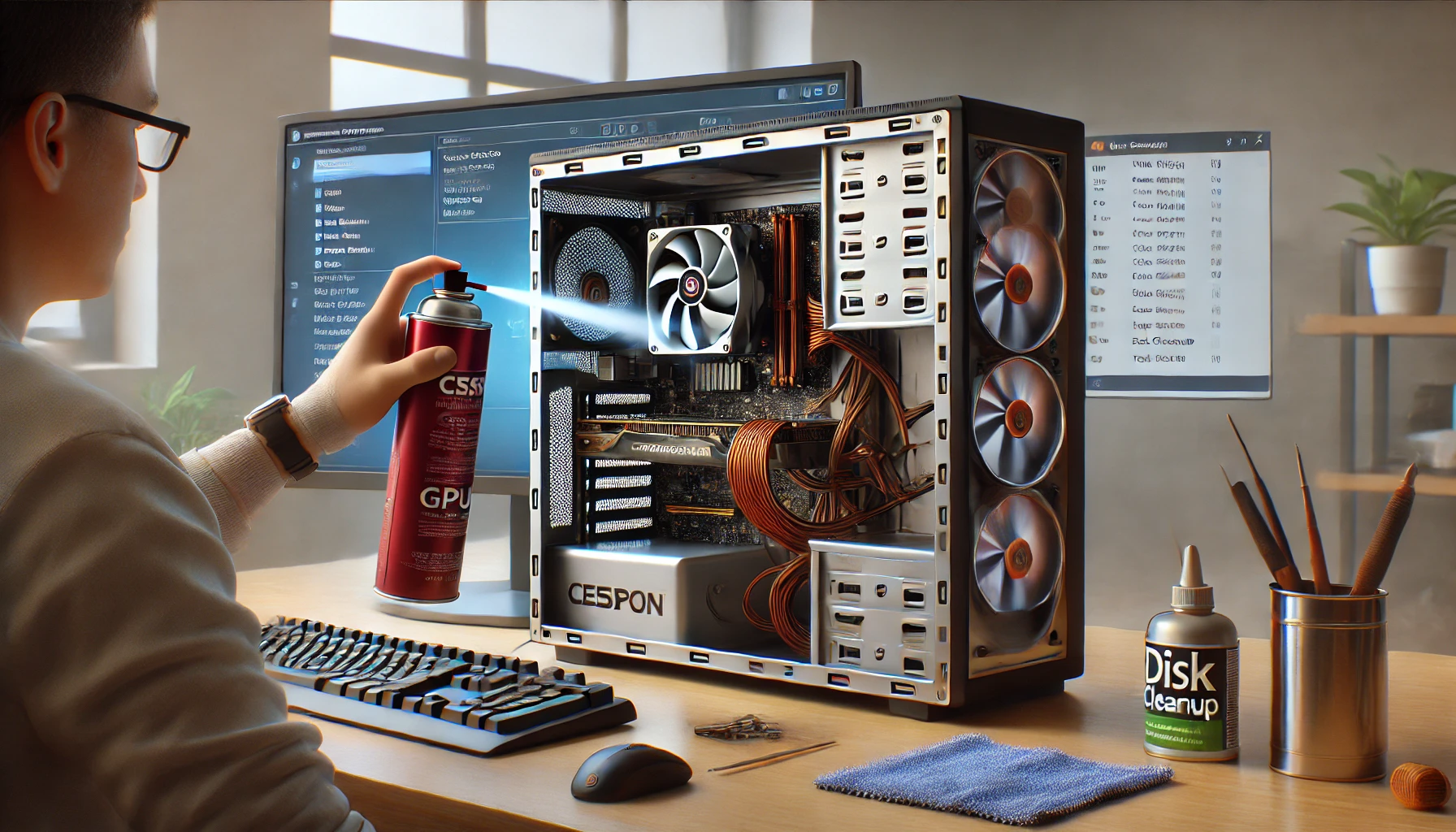Just like a car needs regular oil changes, your PC also needs consistent maintenance to stay fast, stable, and healthy. Whether you use your computer for gaming, work, or everyday tasks, regular cleaning—both inside and out—prevents performance drops, crashes, and even hardware damage.
In this guide, you’ll learn how to maintain and clean your PC properly in 2025 using safe and effective methods, both on the software side and the physical side.
Why PC Maintenance Matters
Routine maintenance helps your PC:
- Run faster and cooler
- Last longer (especially fans, storage, and power supply)
- Avoid overheating or dust buildup
- Prevent unnecessary wear and performance issues
- Maintain consistent startup times and responsiveness
Even high-end systems can slow down or fail without proper care.
Part 1: Software Maintenance
1. Uninstall Unused Programs
Over time, software accumulates—some of it unnecessary.
- Go to Settings > Apps > Installed apps
- Sort by install date or size
- Uninstall anything you no longer use
This clears disk space and can improve boot times.
2. Clean Up Temporary Files
Temporary files build up from updates, apps, and browsing.
- Use Windows Storage Sense:
- Go to Settings > System > Storage
- Enable Storage Sense to clean temporary files automatically
- Or run Disk Cleanup:
- Press Win + S, search for “Disk Cleanup”
- Select system drive (usually C:)
- Check items like Temp Files, Recycle Bin, and Windows Update Cleanup
3. Check Startup Programs
Too many startup apps slow down boot time.
- Press Ctrl + Shift + Esc to open Task Manager
- Go to the Startup tab
- Disable apps you don’t need immediately at startup (e.g., Spotify, Discord, game launchers)
4. Update Your Software and Drivers
Outdated drivers can cause performance issues and crashes.
- Go to Settings > Windows Update
- Install all updates, including drivers
- Manually update GPU, chipset, and motherboard drivers every few months
5. Run Antivirus and Malware Scans
Even if you’re careful, malware can still sneak in.
- Use Windows Defender or Malwarebytes Free
- Run a full system scan once a month
- Enable real-time protection and firewall
6. Optimize Your Drives
- For SSDs: Make sure TRIM is enabled (Windows handles this automatically)
- For HDDs: Use Defragment and Optimize Drives
- Press Win + S, search “Defragment”
- Analyze and optimize if needed
Avoid defragmenting SSDs—it reduces their lifespan.
Part 2: Physical Cleaning
Dust and heat are major enemies of PC components. Cleaning your hardware every 2–3 months makes a huge difference.
What You’ll Need
- Compressed air can (or electric air blower)
- Microfiber cloth
- Small soft brush
- Isopropyl alcohol (for deep cleaning)
- Screwdriver (if opening the case)
1. Turn Off and Unplug the PC
Safety first. Shut down your system completely and unplug it from the power source.
2. Open the Case
Remove the side panel of your case. Most modern cases use thumbscrews or Phillips screws.
3. Blow Out Dust
- Use short bursts of compressed air to blow dust off:
- Fans (hold them still while cleaning)
- GPU
- CPU cooler
- Motherboard
- PSU grills
- Blow from inside out to avoid pushing dust deeper
Do this in a well-ventilated area (preferably outside).
4. Wipe Surfaces
Use a dry microfiber cloth to gently clean:
- Top of the PSU
- Case panels
- Cables and dust filters
Avoid using liquids unless doing deep cleaning.
5. Clean Fan Filters
Most modern cases have removable dust filters. Remove them, tap out the dust, and rinse if washable (dry them fully before reinstalling).
6. Check Cable Management
Tidy up loose cables that might block airflow or gather dust. Use zip ties or Velcro straps.
7. Monitor Fan and Component Health
- Use tools like HWMonitor or Open Hardware Monitor
- Watch for abnormal temps or fan speeds
- If fans make clicking sounds, it may be time to replace them
Optional Advanced Cleaning
- Reapply thermal paste: Do this every 1–2 years if CPU temps start rising
- Clean GPU heatsinks: Remove the GPU’s shroud and fans only if comfortable doing so
- Disassemble keyboard: Useful for mechanical keyboards with sticky keys or debris buildup
Cleaning Schedule (Quick Reference)
| Task | Frequency |
|---|---|
| Dust exterior | Weekly |
| Clean filters/fans | Every 2–3 months |
| Deep interior clean | Every 6 months |
| Thermal paste reapply | Every 1–2 years |
| Software cleanup | Monthly |
| Driver/OS updates | Monthly |
Final Thoughts
Maintaining your PC isn’t difficult—it just requires consistency. A clean and optimized system not only performs better, but also saves you from headaches caused by overheating, slowdowns, or even hardware failures.
Spend a little time each month on software cleanup and give your hardware some care every few months. Your PC will reward you with quiet, smooth, and reliable operation for years to come.
